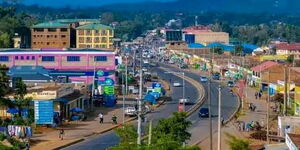Electricity demand in the country has hit new highs, with the Kenya Power and Lighting Company attributing the soaring demand to several factors.
In a statement on Wednesday, KPLC confirmed that electricity demand reached an all-time high in just three months, with peak usage reaching 2,362.28 MW on July 23, 2025.
Data from Kenya Power's National Control Centre further revealed that in July alone, peak demand shot up twice; before the 2,362.28 MW recorded on Wednesday, there was a peak demand of 2,325 MW recorded on July 2.
Peak demand refers to the highest electricity demand that has been recorded at the national control centre, where electricity supply across the country is monitored.
According to KPLC Managing Director Joseph Siror, the rise in demand for electricity was largely because the company had embarked on a mass electrification project over the past financial year.
In the last financial year alone, KPLC estimates indicate that 401,848 new customers were connected to the national grid, leading to a hike in electricity demand by 46 MW between February and July 2025.
“When we look at our electricity dispatch figures, we realise that electricity demand has increased by 46 MW in the last five months since February, when we had the first peak demand this year,” Siror said.
In addition to new customer connections, cold weather has also played a huge role in soaring electricity demand. Since temperatures are low, Kenyans end up relying more on electricity to heat their homes and offices, adding to the strain on the national grid.
Siror, however, noted that the national grid would not undergo strain for too long, since the last-mile connectivity projects were at different advanced stages as the company continues to brace itself for even higher demand in the near future.
"These projects, alongside others targeting commercial and industrial consumers, are expected to push electricity demand even higher,” he added.
Part of the reason demand for electricity will only go higher is the fact that Kenya Power is strongly advocating for the use of Electric Vehicles (EVs) in place of petrol- and diesel-powered automobiles.
As part of this effort, KPLC plans to install 45 EV chargers across six counties during the current financial year.
Nairobi is inevitably among the counties set to benefit from the project, which KPLC projects will run for the next year. Other counties include Nyeri, Kisumu, Eldoret, Nakuru, Mombasa, and Taita Taveta.
This project is part of KPLC's broader strategy to support Kenya's growing e-mobility sector, which is expected to grow and eventually dominate the transport sector at the expense of fuel-powered vehicles.












